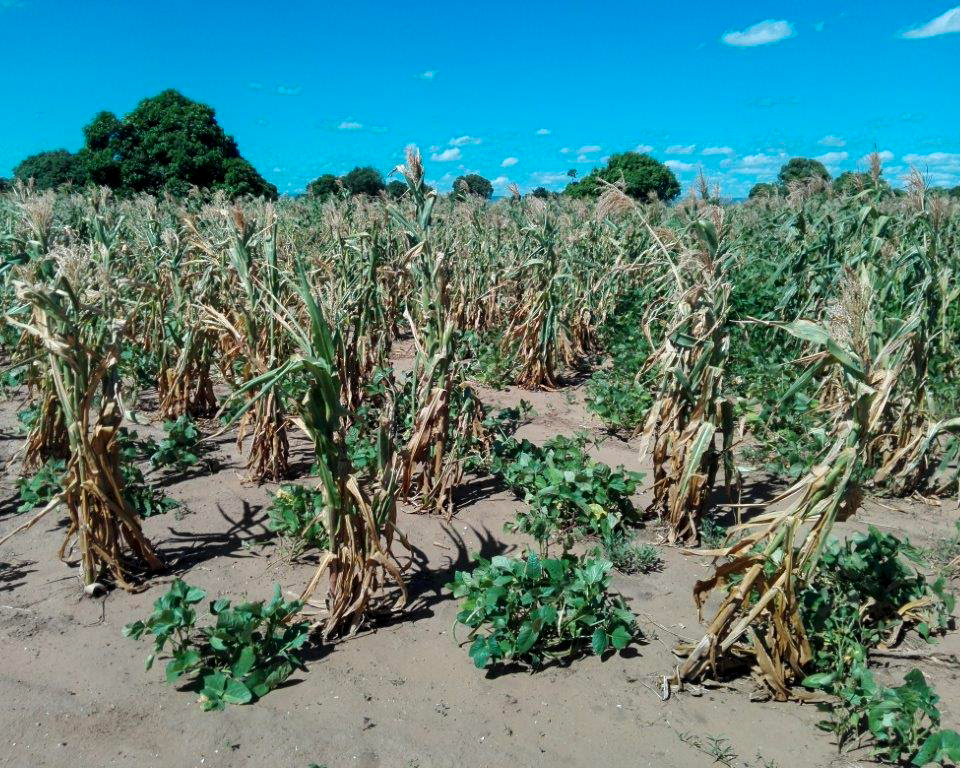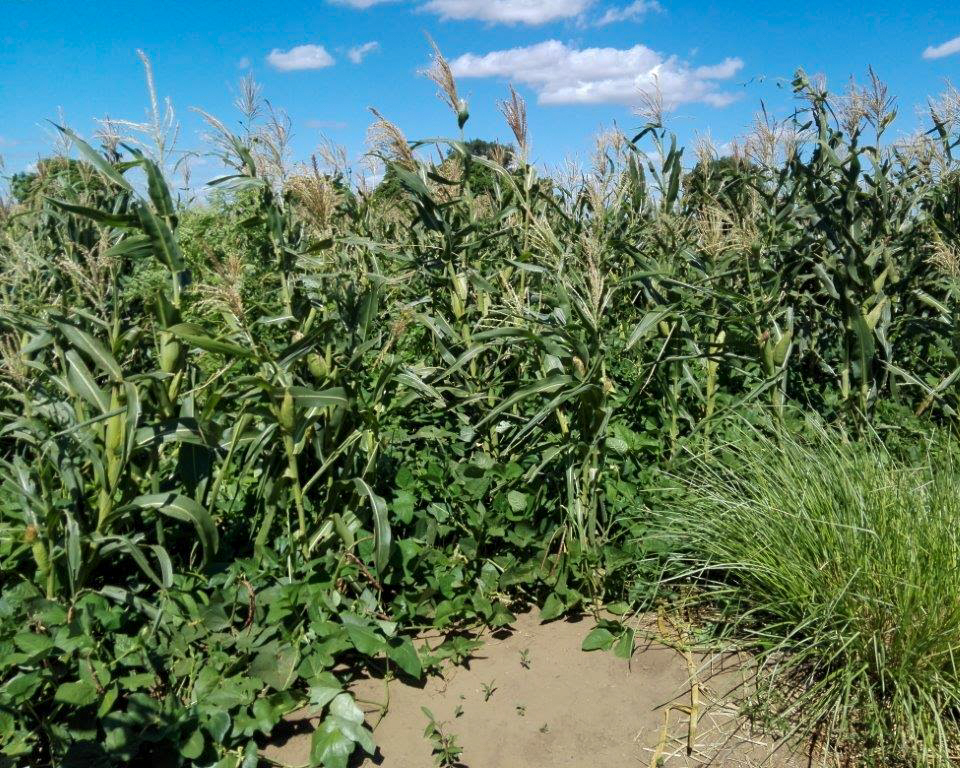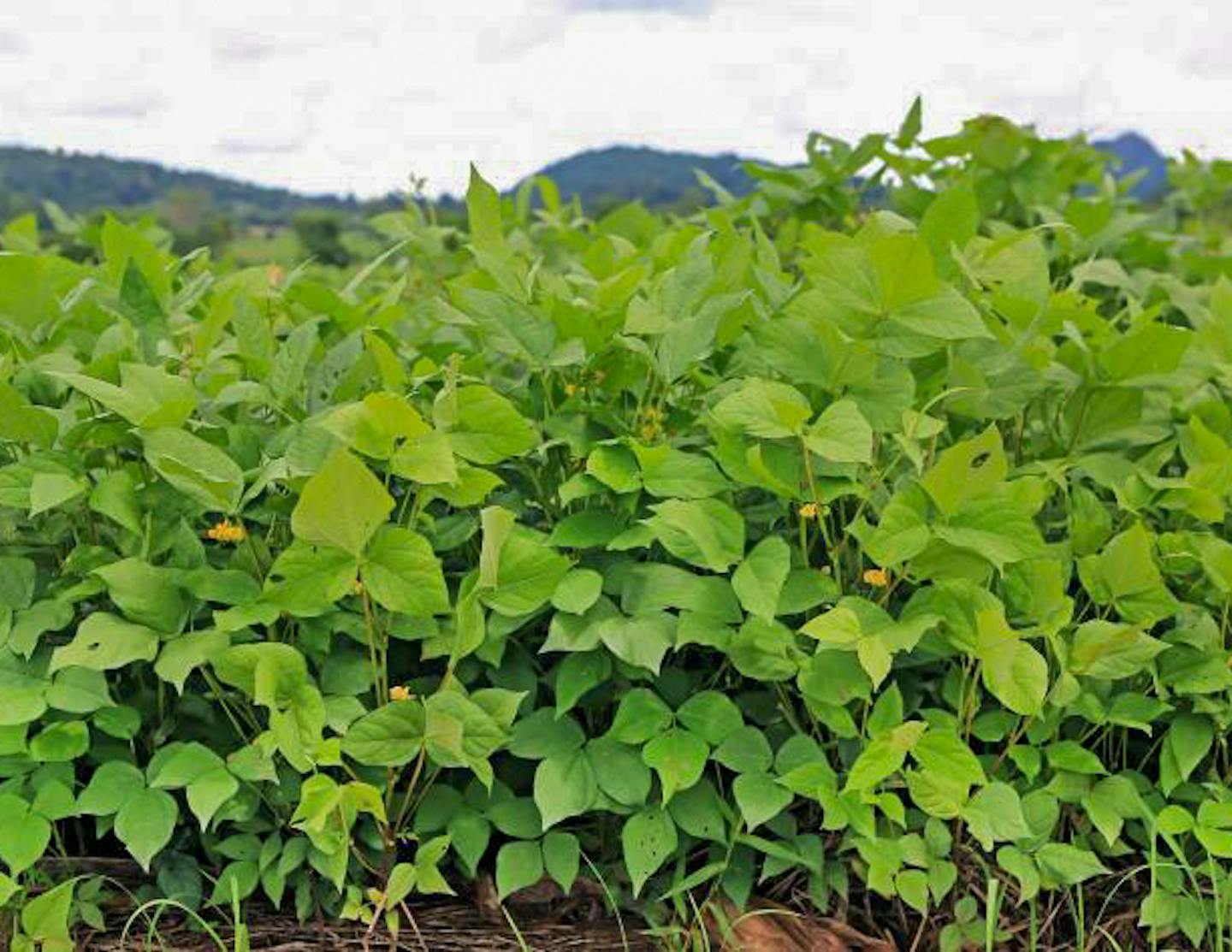Case study 2: the Lojy Be cowpea
- Regenerative Agriculture
- Regenerative Croplands
- Agroecology
- Smallholder Farming
- Sub-Saharan Afrotropics
- Afrotropics Realm
My trip four years ago north of Befandriana Sud reminded me in many ways of my trip five years earlier into Dogon country. It was harvest time, but the maize along the road was barely knee high. The leaves, curled up like the paper on a hand-rolled cigarette, were showing severe signs of drought stress. I had worked the last five years in drought-prone southern Africa, and I could feel the same old sense of grief and frustration welling up inside me.
Then, in one village, I saw two or three fields full of dark green, 2-m-tall maize plants. Their leaves were as flat as a pancake. Then, in the next village, there were six or eight more such fields. Yet there were no funnel-shaped trees in the fields, nor for that matter, any trees at all. I could see nothing that could explain what was happening. I decided that there must be some development organization giving out free fertilizer and introducing a system of irrigation or water-harvesting.
By the time we got to the village, every field looked as though it had been both well-fertilized and irrigated. And still, I couldn’t see anything out of the ordinary; just the maize and, underneath it, some little cowpea plants that farmers grow almost everywhere in Africa, as they often did in Koro.
As soon as we finished the usual formalities with our hosts, I started firing away with the questions. But this time, I went on asking them for half an hour, with no luck. The mystery only seemed to grow. Finally, one farmer happened to mention how they always had to cut back the cowpea plants in November so they could plant their maize the minute the rains started. I immediately interjected:
“But hold it! These cowpeas grow clear through three months of dry season?!”
“No. They grow through the whole six months of the dry season.”
“But cowpeas only grow for three months, or at most four months.”
“Not these cowpeas. These cowpeas grow for nine months.”
“So how often do you plant them so there are cowpeas out here all nine months?”
“No. We plant them in February. They produce two crops of cowpeas, and then the same plants die in November.”
I thought something must be wrong with the translation I was getting. “The same cowpea plants stay alive for nine whole months?!”
Totally surprised at my disbelief, he answered patiently, as if to a small child who was still discovering how the world works. “Yes. This cowpea grows for nine months before it dies.”
After I stopped to let what he had said sink in, and made sure I could think of no reason he would be fibbing to me, I answered, “Oh my gosh! This is incredible! Where did you ever get these seeds?”
“We’ve always had them. They’re our traditional seeds.”
For two decades, my colleagues and I had been searching the world over for a good gm/cc that would work all over Africa. It would need to be a species that people all across Africa already consumed in large quantities. It would need to fix lots of nitrogen, and be able to grow through the dry season so that the nitrogen and biomass would be available to fertilize the next year’s crops when the crops needed them. Furthermore, by this time, the Dogon experience and a dozen others in Africa had taught us that if enough biomass could survive the dry season, the organic matter build-up in the soil after five or six years would bring tremendous resistance to drought. Now, without even knowing it, I was apparently standing right in the middle of a whole field of just such a miracle crop.

The Lojy Be cowpea control plot. The woman’s control plot above, with no previous plantings of Lojy Be cowpeas, and the experimental plot in the photo below, with six previous years of Lojy Be use, are about 10 m apart. The dark green foliage of the experimental plot can be seen in this photo behind the control plot, in the right-hand third of this photo. These two photos were taken the same day. In fact, the two clouds just appearing at the right of this photo are obviously the same two clouds that have moved just a little more than half-way across the sky toward the left in the second photo. The same very small amount of synthetic fertilizer was used in each plot. Even though the maize here has a much lower plant population/ha than the maize in the experimental plot, the maize in this field has tightly curled leaves, a sign of extreme drought stress. Even the Lojy Be, although drought tolerant enough to be quite green, has only formed tight little clumps of vegetation rather than covering all of the soil.

The Lojy Be cowpea experimental plot. The dark green color of the maize here not only indicates that soil fertility has improved dramatically, but its wide flat leaves show it has suffered virtually no drought stress, either, even though it has produced a lot more biomass. The only indication that a drought even occurred are the curled leaves of two hills of maize in the center of the photo where they had to compete for moisture with some previously established vetiver grass. The Lojy Be itself, a crawling, edible cowpea, has completely covered the ground without climbing or bothering the maize. It has thereby maintained moisture in the soil both by covering the soil and increasing its organic matter content. One can also see that outside of the field, the soil is still the same dry, whitish soil seen all through the control plot. Even more remarkable, the drought resistance was achieved without the added complement of any shade from trees. The increased fertility in this case has brought at least a tripling in the productivity of the maize. The resistance to drought will double that yield differential again; the experimental plot will easily produce over six times the yield/ha of the control plot, in addition, of course, to the two harvests of high-protein cowpeas. Both the increase in productivity resulting from more fertile soil and that resulting from increased drought resistance are typical of the increases in yields achieved by many other gm/cc species that produce equally large quantities of biomass. Credit: Roland Bunch.
I had never seen anything remotely like a 9-month cowpea, or read or heard about it. Scientists had dedicated a lot of time to developing shorter-term cowpeas, down to about 60 days to maturity, but as far as I know, no one had ever dreamed of developing any longer-term cowpea.
Of course, the Lojy Be (pronounced LOOD zeh BEH) crawling cowpea will have to be tried out in other environments and situations. Nothing new in agriculture is totally predictable. But the fact that the Lojy Be could grow in such a difficult climate, through a crippling drought and then six months of dry season, was good reason for hope. Furthermore, it was a very promising sign that its use had gradually spread to many thousands of farmers in at least 150 villages, all the way to Toliare,
That it had spread so far was not surprising, given this bean’s many qualities:
- Cowpeas, along with peanuts and common beans, are among the three most widely consumed grain legumes in Africa, and are consumed in large quantities—enough to dramatically improve people’s nutritional well-being if they had access to them all year long.
- Furthermore, the leaves of cowpeas are eaten widely in Africa. These can also be dried and serve as a virtually free and generous supply of proteins, vitamins and minerals all 12 months of the year.
- The common 4-month cowpeas fix some 60 kg of N/ha, about twice that of common beans. Nevertheless, in unshaded lowland environments with only one rainy season, they are largely useless at fertilizing the soil, since their fertilizing effect is largely burned off by the six months of tropical heat during the dry season. The Lojy Be variety, however, can grow right through a whole 6-month dry season, providing both the fertility and drought-resistance that was so visible during my drive out into the village. That is, it can increase yields two or three times over a five-year period, can improve natural soil fertility over decades, and in the process, provide an impressively high level of resilience to drought.
- The Lojy Be variety is even more resistant to drought than all but about two other known edible legumes.
- The Lojy Be variety produces a more or less continuous harvest from about 3 to 6 months after planting.
- Lojy Be plants cover the ground almost completely from about 45 days after planting until they die, which means soils retain more moisture and are not damaged by the tropical heat.
- Being a crawling plant, the Lojy Be can be intercropped with virtually any other crops already planted in farmers’ fields, except other crawling plants or cover crops. Basically, it doesn’t occupy any land that the farmer was previously using; it just grows under the crops the farmer already grows.
- At least in Madagascar, people consider the Lojy Be to be even tastier than most other cowpeas.
Things are never perfect in agriculture. Lojy Be, like all cowpeas, is attacked by several insects. Also, the Lojy Be will sometimes die prematurely if the rainy season is excessively droughty and there are no rains at all during the dry season. But these are relatively minor concerns. The insect attacks will be reduced because it is being intercropped with other crops. The susceptibility to droughts will automatically disappear as the soil gains more organic matter, allowing it to absorb and hold more moisture.



